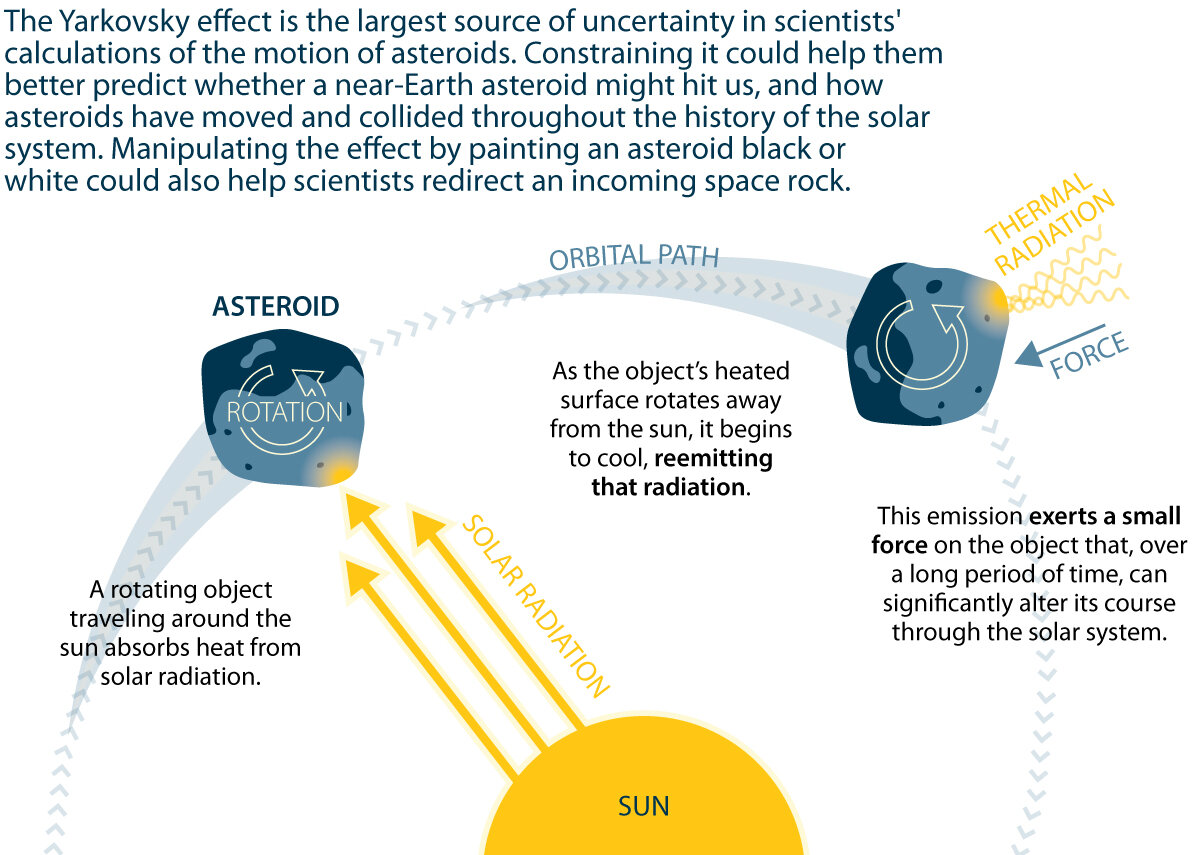Yarkovsky Effect
2023 OCT 2
Preliminary >
Science and Technology > Space technology > Basics of space technology
Why in news?
- NASA’s OSIRIS-REx mission triumphantly retrieved a sample from the asteroid Bennu and is currently embarked on an extended mission to investigate Apophis. This mission holds great importance in enhancing our comprehension of the early solar system, the possibility of asteroid impacts, and the impact of the Yarkovsky effect on asteroids.
About Yarkovsky Effect

- The Yarkovsky effect is a phenomenon in astronomy where the absorption and re-emission of solar radiation by an object in space can cause a small but significant force that can alter its trajectory over time.
- This effect is particularly important for small celestial bodies like asteroids and can influence their orbital evolution.
- This effect can lead to small but significant changes in an asteroid’s path, potentially influencing its orbit and posing collision risks with Earth.
- Scientists study the Yarkovsky effect to better understand and predict the movements of asteroids in our solar system.
About OSIRIS-REx Mission
- It is the United States’ first asteroid sample return mission, aiming to collect and carry a pristine, unaltered sample from an asteroid back to earth for scientific study.
- The OSIRIS-REx (Origins, Spectral Interpretation, Resource Identification, Security, Regolith Explorer) spacecraft was launched in 2016 for the journey to Bennu.
- It has successfully delivered the first asteroid samples recently from the near-Earth asteroid Bennu (formerly 1999 RQ36) to Earth after a seven-year journey, bringing valuable 4.5 billion-year-old samples.
About Asteroids
- These are rocky objects that orbit the Sun, much smaller than planets. They are also called minor planets.
- According to NASA, 9,94,383 is the count of known asteroids, the remnants from the formation of the solar system over 4.6 billion years ago.
- Asteroids are divided into three classes:
- First, those found in the main asteroid belt between Mars and Jupiter, which is estimated to contain somewhere between 1.1-1.9 million asteroids.
- The second group is that of trojans, which are asteroids that share an orbit with a larger planet.
- The third classification is Near-Earth Asteroids (NEA), which have orbits that pass close by the Earth. Those that cross the Earth’s orbit are called Earth-crossers.
PRACTICE QUESTION:
Yarkovsky effect, recently seen in news is associated with:
(a) Recombinant DNA technology
(b) An astronomical phenomenon
(c) Volcanism
(d) Internal migration of human resources
Answer
